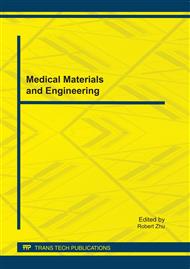[1]
Smartt, Canavalia gladiata (Jacq.) D.C. (Sword bean), In Tropical Pulses, Longman Group, London, 1976, p.58.
Google Scholar
[2]
R. Bressani, B.R. Gomez, A. Garcia, and L.G. Eliaz, Chemical composition, amino acid content and protein quality of Canavalia seeds, J. Sci Food Agric. 40 (1987) 17–23.
DOI: 10.1002/jsfa.2740400104
Google Scholar
[3]
S. Eknayake, E.R. Jansz and B.M. Nair, Proximate composition, mineral and amino acid content of mature Canavalia gladiata seeds, Food Chem. 66 (1999) 115–119.
DOI: 10.1016/s0308-8146(99)00041-2
Google Scholar
[4]
T.C. Mosha, H.E. Gaga, R.D. Pace, H.S. Laswai and K. Mtebe, Effect of blanching on the content of antinutritional factors in selected vegetables, Plant Food Hum Nutr. 47 (1995) 361–367.
DOI: 10.1007/bf01088275
Google Scholar
[5]
S. Linder, A proposal for the use of standardized methods for chlorophyll determinations in ecological and eco-physiological investigations, Physiol Plantarum. 32 (1974) 154–156.
DOI: 10.1111/j.1399-3054.1974.tb03743.x
Google Scholar
[6]
M. Fuchigami, K. Miyazaki, N. Hyakumoto, Frozen carrots texture and pectic compotients as affected by low-temperature-blanching and quick freezing, J Food Sci. 60 (1995) 132–136.
DOI: 10.1111/j.1365-2621.1995.tb05622.x
Google Scholar
[7]
G. Préstamo, C. Fuster, M. C.Risueño, Effects of blanching and freezing on the structure of carrots cells and their implications for food processing, J Sci Food Agr. 77 (1998) 223–229.
DOI: 10.1002/(sici)1097-0010(199806)77:2<223::aid-jsfa29>3.0.co;2-2
Google Scholar
[8]
M.A. Murcia, B.L. Ayerra, M.M. Tomé, F.G Carmona, Effect of industrial processing on chlorophyll content of broccoli, J Sci Food Agr. 80 (2000) 1447–1451.
DOI: 10.1002/1097-0010(200008)80:10<1447::aid-jsfa670>3.0.co;2-x
Google Scholar
[9]
M.A. Murcia, B.L. Ayerra, M.M. Tomé1, F.G. Carmona, Effect of industrial processing on amino acid content of broccoli, J Sci Food Agr. 81 (2001) 1299–1305.
DOI: 10.1002/jsfa.942
Google Scholar
[10]
D.J. Favell, A comparison of the vitamin C content of fresh and frozen vegetables, Food Chem. 62 (1998) 59–64.
DOI: 10.1016/s0308-8146(97)00165-9
Google Scholar
[11]
S.T. Deexter, Salt concentration and reversibility of ice-formation as related to the hardiness of winter wheat, Plant Physiol. 9 (1934) 601–618.
DOI: 10.1104/pp.9.3.601
Google Scholar
[12]
F.A. Lee, W.A. Gortner, J. Whitcombe, Effect of Freezing Rate on Vegetables, Ind. Eng. Chem., 38 (1946) 341–346.
DOI: 10.1021/ie50435a027
Google Scholar
[13]
M.C. Giannakourou, P.S. Taoukis, Kinetic modelling of vitamin C loss in frozen green vegetables under variable storage conditions, Food Chem. 83 (2003) 33–41.
DOI: 10.1016/s0308-8146(03)00033-5
Google Scholar
[14]
P. Toivonen, The effects of storage temperature, storage duration, hydro-cooling, and micro-perforated wrap on shelf life of broccoli, Postharvest Biol Tec. 10 (1997) 59–65.
DOI: 10.1016/s0925-5214(97)87275-4
Google Scholar


